Making Bavarian Cream
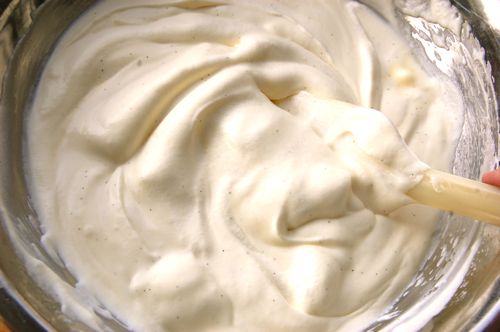
Oh silky, lovely bavarian cream…all set to be poured into a mold (after I’ve dipped my finger in it a time or two, of course). Making a crème anglaise-style Bavarian cream is only a little more complicated than making crème anglaise. All you’re doing is combining your custard with whipped cream and gelatin. Easy. Below I’m attempting to make it outdoors in mid-afternoon on the hottest day of the year so far, which is less easy. Why bring that up? Because I wanted you to know how much I toil and suffer for you. Feel guilty? Good, then let’s move on. Prepare an ice bath in the largest bowl you have.
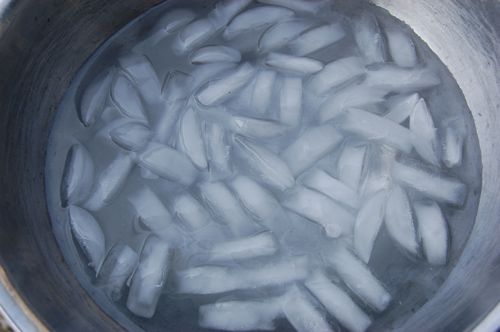
Now add the gelatin to the small quantity ice water (swiped from your water bath, of course).
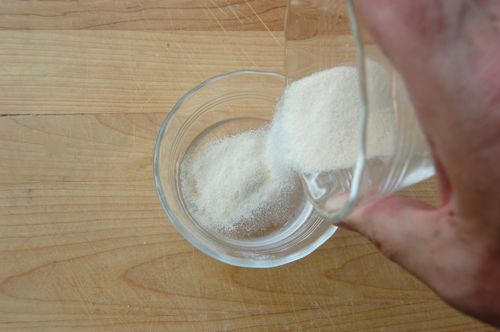
Now add your egg yolks to your sugar in a large bowl…
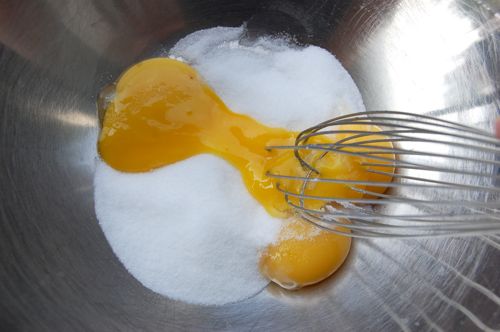
…and whisk until well-combined.

Combine the half-and-half with the vanilla seeds in a small saucepan, whisk and bring to the boil over medium-high heat.
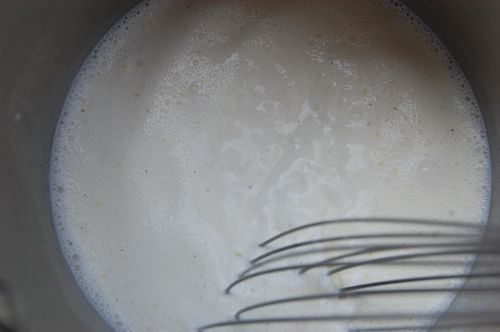
Slowly pour the boiling half-and-half into the egg mixture, whisking all the while. No, I know I’m not whisking, I’m taking pictures! Gimme a break!

Pour the mixture back into the saucepan…

…and heat the mixture to thicken the yolks. Your target temperature is 196 degrees. Much more than that and the eggs will start to cook into lumps. A lot of very experienced pastry chefs don’t use a thermometer during this stage of the procedure, preferring to wait until they see the first bubble, indicating that the custard is about to boil. Then they remove the custard from the heat. They get lumps, but then the mixture is strained anyway. It’s really up to you what you’d like to do here.

When the crème anglaise is up to temperature, strain it into a clean bowl.
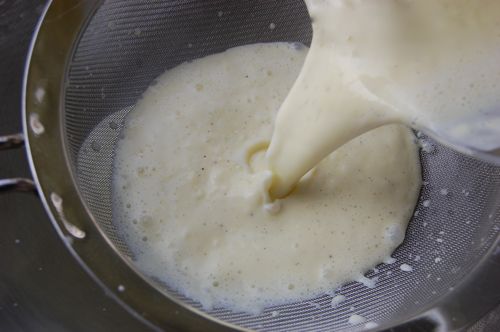
Now dump in your blob of gelatin — plunk!
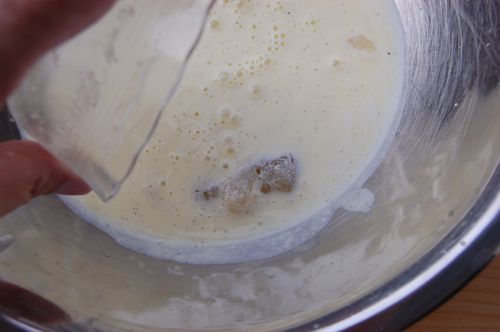
…and whisk it in. It will melt very quickly.
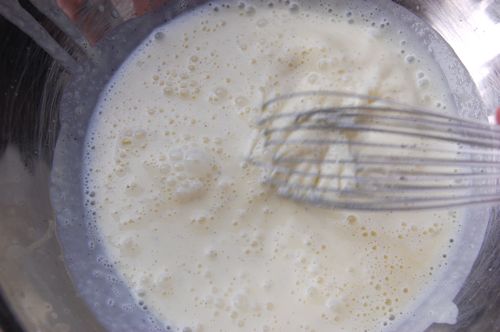
Now’s a good time to add any flavorings that might complement your preparation. Here I’m adding a little Amaretto, maybe two tablespoons.
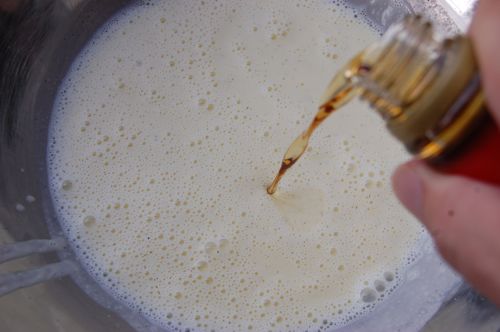
After everything is whisked together, place the bowl into the ice water bath. This not only cools the mixture, it helps the gelatin to start setting up.

While the custard is cooling down, turn your attention to the whipped cream. Add the cold heavy cream to the bowl of a mixer fitted with a whip…
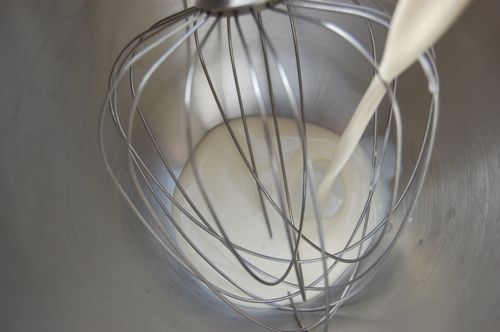
…and whip to soft peaks.

Now return to the custard. It should be only slightly warm by now. Stir it gently with your spatula, scraping any congealed custard away from the sides of the bowl. It will re-melt as you stir. Continue to do this as the mixture cools down. The texture you want is a bit hard to describe. You want it thickened slightly, but not so thick that the gelatin makes lumps in the finished product.
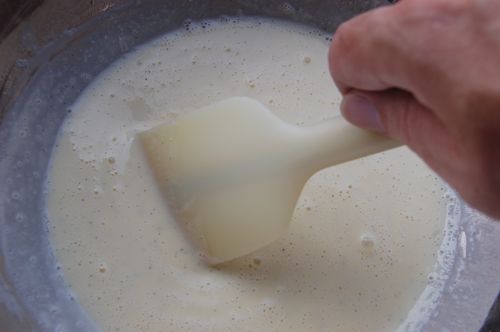
You can sort of see what I mean. Look at the edge of the pool of custard where it meets the pan. As I’m stirring and scraping, it’s bulging a little.

And when I pick up the implement up out of the custard I’m seeing very faint tracks. This texture is almost like a yogurt drink, like kefir. Make sense?

Now that your custard has started to thicken, remove it from the ice water bath and start folding in the whipped cream…
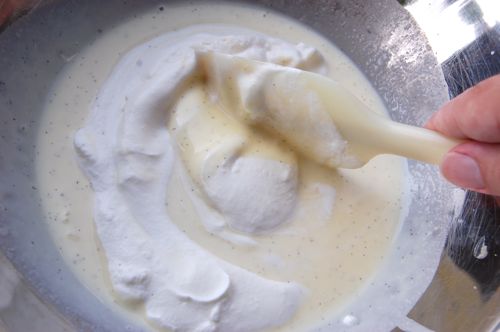
…until it’s all incorporated. (For more on folding, see the tutorial under the Techniques menu).
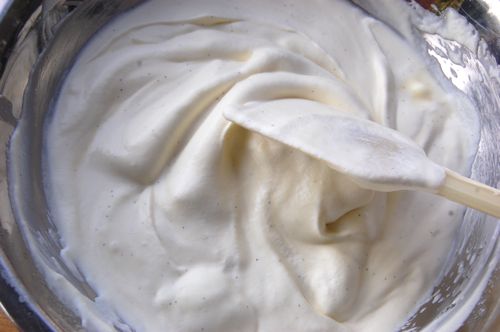
Done! Now promptly pour the finished Bavarian cream into whatever mold you intend, because the gelatin will set up in earnest before too much longer.
So there you have it. I confess it’s a touch involved, but trust me, good Bavarian cream is one of life’s great simple pleasures. You will enjoy it.
Hm. Cool. And nice pictures. I have a question, though – is it possible to fix the mixture if it sets up before the whipped cream is folded in?
Hi Peach! And thanks!
That might just work, actually, if you heat the custard mixture very gently until it melts, then allow it to cool again. Let me know how it goes!
– Joe